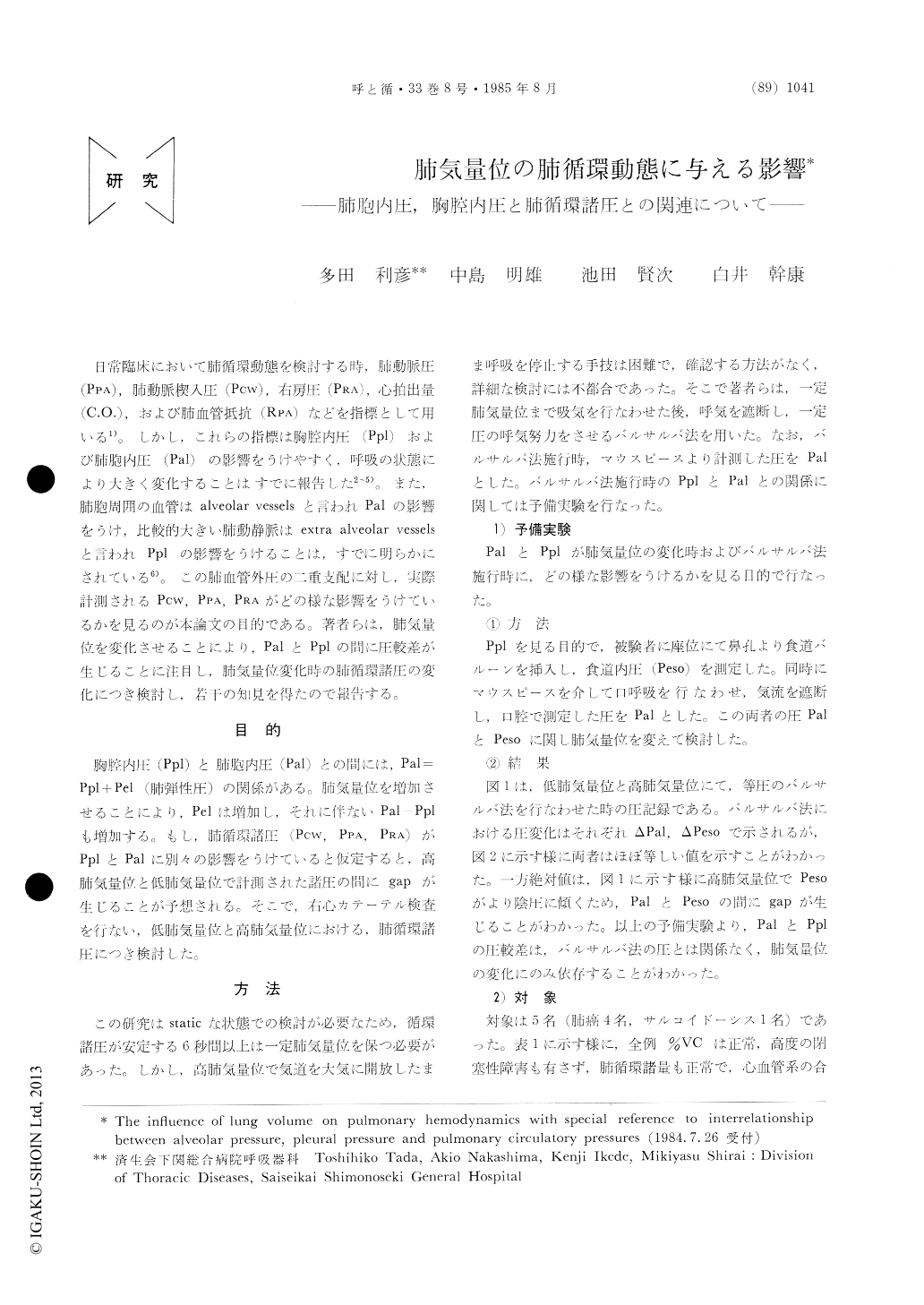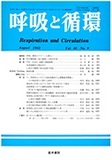Japanese
English
- 有料閲覧
- Abstract 文献概要
- 1ページ目 Look Inside
日常臨床において肺循環動態を検討する時,肺動脈圧(PPA),肺動脈楔入圧(PCW),右房圧(PRA),心拍出量(C.O.),および肺血管抵抗。RPA)などを指標として用いる1)。しかし,これらの指標は胸腔内圧(PPl)および肺胞内圧(Pal)の影響をうけやすく,呼吸の状態により大きく変化することはすでに報告した2〜5)。また,肺胞周囲の血管はalveolar vesselsと言われpalの影響をうけ,比較的大きい肺動静脈はextra alveolar vesselsと言われPplの影響をうけることは,すでに明らかにされている6)。この肺血管外圧の二重支配に対し,実際計測されるPCW,PPA,PRAがどの様な影響をうけているかを見るのが本論文の目的である。著者らは,肺気量位を変化させることにより,PalとPplの間に圧較差が生じることに注目し,肺気量位変化時の肺循環諸圧の変化につき検討し,若干の知見を得たので報告する。
In the lung the variation in pressure outside blood vessels are great in many instances. Our purpose was to determine the relationship between pleural pressure (Ppl) and alveolar pressure (Pal), which effect on pulmonary circulation, when lung volume was changed. As lung volume increased, Ppl was decreased, while Pal held constant if airflow was stopped. On five patients without cardiopulmonary complications, right atrial pressure (Pra), pulmo-nary arterial pressure (Ppa) and pulmonary artery wedge pressure (Pcw) were measured at two lung volume, high lung volume (TLC) and low lung volume (FRC). In order to keep the lung volume constant and to evaluate Pal and Ppl, Valsalva maneuver was performed and Pal was measured at mouth simultaneously. Pra was decreased signif-icantly as lung volume increased and Ppl decreased, whereas Ppa and Pcw were held constant at two conditions. We suspected that Pra is effected by Ppl as extra vascular pressure, when lung volume was changed, while Pcw and Ppa are effected by Pal.

Copyright © 1985, Igaku-Shoin Ltd. All rights reserved.


